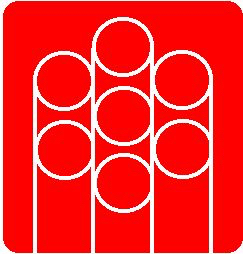Title Page
-
Prepared by
-
Conducted on
-
Location
-
Work Area
Safety Inspection
FIRE PROTECTION
-
Do employees take precautions to prevent ignition sources from coming in contact with combustible or flammable material?
-
Do employees wear appropriately rated fire resistant clothing when necessary for the job task?
-
Is there a fire extinguisher within 75' and properly charged?
-
Is the date that is punched within one year of today’s date?
-
Has someone been initialing the tag once a month?
-
Do the fire extinguishers have at least 36” of clearance in front of them?
-
Are all fire extinguishers rated ABC?
HOUSEKEEPING
-
Is the general work area organized and free of clutter?
-
Is all equipment properly stored when not in use?
-
Do employees turn-off compressed gas cylinders and bleed the lines at the end of each work day or when not in-use for long periods of time?
-
Is the work area free of open drinks and food items?
-
Is the overall housekeeping of the area in an acceptable condition for the work being performed?
EXITS
-
Does each employee in the area know where the nearest emergency exit is located?
-
Do all exit doors open from the inside during business hours?
-
Are all exits clear and easily accessible during an emergency?
-
Is emergency lighting provided and in working order?
-
Are employees in this area familiar with the Emergency Evacuation Plan?
WORK ENVIRONMENT
-
Are there any new employees who have started in the last 90 days?
-
Have all new employees received new hire safety training?
-
Have all new employees received job specific training?
-
Employee must be trained in their specific job tasks immediately prior to continuing work.
-
Are all employees comfortable in their knowledge of the job tasks and aware of associated hazards?
-
Is adequate lighting provided for the work area?
-
Are safety warning signs posted where applicable?
-
Are employees reducing air pressure to 30psi for cleaning?
-
Are air hoses free of frays, cracks and other damage?
-
Are SOP’s for each job task in the work area available for training and reference to affected employees?
-
Are the SOP training records complete and up-to-date?
-
Are only employees trained to the SOP performing the job task?
WALKING/WORKING SURFACES
-
Are all aisles clearly marked?
-
Are all aisles wide enough to accommodate the widest piece of equipment used in that area with three feet on either side or have adequate room for employees to move to a safe distance?
-
Are aisles and walkways clear of tripping hazard?
-
Are working surfaces kept free of debris and unnecessary clutter?
-
Are all employees using fall protection, if required?
-
Have all employees who use fall protection received training?
LADDERS
-
Are ladders in good working condition and free of deformities or damage?
-
Are employees using the appropriate size ladder for the work performed?
-
Do all ladders have a legible loading sticker?
-
Are unused ladders stored, hung, chained and out of the way?
PERSONAL PROTECTIVE EQUIPMENT
-
Are employees using the PPE outlined in their applicable JHA?
-
Do employees receive new PPE as necessary?
-
Are safety glasses provided and being used?
-
Is hearing protection provided and being used where required?
-
Are respirators in-use?
-
Do all employees using respirators have medical clearance and fit-test records, where necessary, for each type of respirator used?
-
Are steel toe shoes being worn?
-
Are dust masks being used?
-
Have all employees using dust masks signed an App. D form?
HAZARD COMMUNICATION
-
Are flammables and combustibles stored away from ignition sources?
-
Are flammable materials stored in a fire rated cabinet or other approved storage area when not in-use?
-
Do employees know where the HAZCOM station is and how to properly affix labels?
-
Are all bottles and chemicals in the work area identifiable with manufacturers label or in-house HMIS label?
-
Are chemical names and hazard information legible on all HMIS labels?
-
Are employees aware of the hazards associated with chemicals they may be exposed to in their work area?
-
Can employees locate the SDS binder or SDS's attached to SOP's?
-
Are bottles being re-used for the same materials rather than being tossed in the trash?
FORKLIFT AND CRANE OPERATIONS
-
Are only trained employees operating the forklifts and cranes (no temps)?
-
Are the forklift and crane inspections being done daily?
-
Are all chains and slings stored properly when not in use?
-
Do all chains and slings have a legible loading capacity tag?
-
Are slings and chains used for lifting inspected before use?
-
Are slings and chains that are damaged being taken to maintenance for removal?
ELECTRICAL
-
Do all breaker boxes have at least 36” of clearance in front of them?
-
Are all extension cords free of frays, tape and other damage?
-
Is there a ground plug on the end of each cord?
LOCKOUT/TAGOUT (LOTO)
-
Are LOTO procedures posted on machinery?
-
Have all affected employees been trained on their role in LOTO?
RACKING
-
Is all racking bolted to the floor to prevent movement?
-
Are all uprights straight and in good condition?
-
Is the base of each upright protected by a guard?
-
Are the items on the racking stacked with the lighter items on top and the heavier items on the bottom where possible?
-
Is the loading capacity of the racking identifiable?
-
Do employees verify the racking is not being overloaded?
-
Audit Complete:












